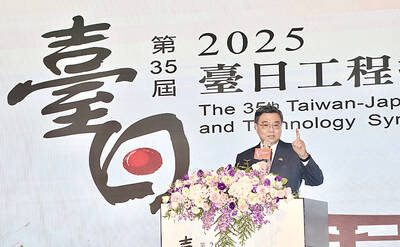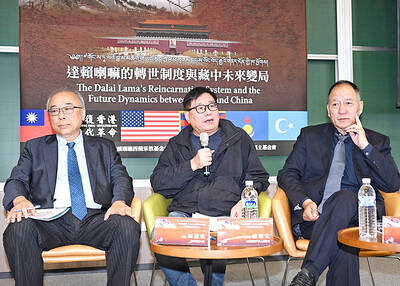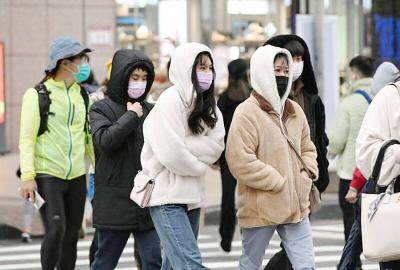The Philippines is positioning itself as Taiwan’s “gateway” to Southeast Asia and hopes to spur two-way economic and educational exchanges with Taiwan, Manila Economic and Cultural Office in Taipei (MECO) director for commercial affairs Michael Alfred Ignacio said.
Ignacio said he has seen “very strong interest” from the Taiwanese government in advancing its New Southbound Policy and Taiwan was the second-largest source of foreign direct investment (FDI) in the Philippines last year.
The southbound policy, adopted in May 2016, aims to forge links with ASEAN members, as well as South Asian nations, Australia and New Zealand.
Taiwanese FDI in the Philippines last year was 10.833 billion pesos (US$203.12 million at the current exchange rate), about a sevenfold increase from 1.608 billion pesos in 2016 and double the amount that Taiwan invested in 2015, Philippine Statistics Authority (PSA) data showed.
“We want to become Taiwan’s gateway to Southeast Asia and New Southbound countries,” Ignacio said.
The Philippines is Taiwan’s closest neighbor, its economy is growing at a strong pace, English is the main language of business and it has a market of 104 million people, making it a good country to partner with in the search for engagement with southbound countries, Ignacio said.
The Philippines has “been working very closely with Taiwan’s government to make [the policy] a reality,” said Ignacio, who started in the position 11 months ago.
Under the southbound policy and Manila’s strategy to engage Taiwan economically, partnerships are starting to materialize, he said.
In terms of industrial capacity building, for example, Taiwan has helped train Philippine engineers to develop the Philippines’ industrial capabilities and bolster its participation in the global electronics, manufacturing and Internet of Things supply chains, he said.
The countries also cooperate in industries where the Philippines has the best chance of success, such as shared service facilities aimed at improving the competitiveness of micro, small and medium-sized enterprises and IC design, Ignacio said.
He said the Philippines also wants to increase two-way trade and exchanges in education.
Taiwan ranked as the Philippines’ eighth-largest trading partner with bilateral trade of US$7.19 billion, PSA data showed.
It was also the country’s 10th largest export market and the eighth-largest exporter to the Philippines, the data showed.
A key initiative has been to intensify efforts to introduce Philippine products on Taiwan’s mainstream market, Ignacio said, a shift from what he called the “xenocentric” approach of importing products to Taiwan to sell in Philippine stores and to Philippine expatriates.
MECO is hosting an in-store promotion at City Super in Taipei for a second year running to showcase a variety of Philippine specialties, including snacks that go back to Spanish colonial days, such as chicharron, ethnic products, dried mangoes, pineapple juice, mango liquors and coconut oil, he said.
The office was involved in handpicking the items that have the most potential to succeed with Taiwanese consumers, he added.
The in-store promotion follows a visit in March by a delegation of Philippine food exporters to explore the Taiwanese market at the annual Sourcing Taiwan trade show and is to be followed by a large exhibition of Philippine products at the upcoming Taipei International Food Show from Wednesday to Saturday next week.
In terms of educational exchanges, the office has promoted the Philippines as a destination for Taiwanese students to study English, communications, literature, and the humanities and arts, Ignacio said.
“We want to promote our expertise, so we can help each other,” he said. “The Philippines offers excellent education and studying in the Philippines is very cheap.”
“We have a successful proof of concept with Japan and Korea,” Ignacio said. “Japanese and Koreans have been studying English in the Philippines for maybe 20 years. Why not Taiwanese?”

ALIGNED THINKING: Taiwan and Japan have a mutual interest in trade, culture and engineering, and can work together for stability, Cho Jung-tai said Taiwan and Japan are two like-minded countries willing to work together to form a “safety barrier” in the Indo-Pacific region, Premier Cho Jung-tai (卓榮泰) yesterday said at the opening ceremony of the 35th Taiwan-Japan Modern Engineering and Technology Symposium in Taipei. Taiwan and Japan are close geographically and closer emotionally, he added. Citing the overflowing of a barrier lake in the Mataian River (馬太鞍溪) in September, Cho said the submersible water level sensors given by Japan during the disaster helped Taiwan monitor the lake’s water levels more accurately. Japan also provided a lot of vaccines early in the outbreak of the COVID-19 pandemic,

Kaohsiung Mayor Chen Chi-mai (陳其邁) on Monday announced light shows and themed traffic lights to welcome fans of South Korean pop group Twice to the port city. The group is to play Kaohsiung on Saturday as part of its “This Is For” world tour. It would be the group’s first performance in Taiwan since its debut 10 years ago. The all-female group consists of five South Koreans, three Japanese and Tainan’s Chou Tzu-yu (周子瑜), the first Taiwan-born and raised member of a South Korean girl group. To promote the group’s arrival, the city has been holding a series of events, including a pop-up

TEMPORAL/SPIRITUAL: Beijing’s claim that the next Buddhist leader must come from China is a heavy-handed political maneuver that will fall flat-faced, experts said China’s requirement that the Dalai Lama’s reincarnation to be born in China and approved by Beijing has drawn criticism, with experts at a forum in Taipei yesterday saying that if Beijing were to put forth its own Dalai Lama, the person would not be recognized by the Tibetan Buddhist community. The experts made a remarks at the two-day forum hosted by the Tibet Religious Foundation of His Holiness the Dalai Lama titled: “The Snow Land Forum: Finding Common Ground on Tibet.” China says it has the right to determine the Dalai Lama’s reincarnation, as it claims sovereignty over Tibet since ancient times,

Temperatures in some parts of Taiwan are expected to fall sharply to lows of 15°C later this week as seasonal northeasterly winds strengthen, the Central Weather Administration (CWA) said today. It is to be the strongest cold wave to affect northern Taiwan this autumn, while Chiayi County in the southwest and some parts of central Taiwan are likely to also see lower temperatures due to radiational cooling, which occurs under conditions of clear skies, light winds and dry weather, the CWA said. Across Taiwan, temperatures are to fall gradually this week, dropping to 15°C to 16°C in the early hours of Wednesday